
Phander Valley: Pakistan’s Hidden Paradise
By Samantha Shea
I couldn’t believe this place was real.
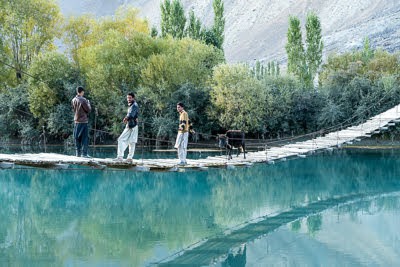
You would think that after nearly four months, I would have been used to Pakistan’s immense beauty by now- but somehow, the country continuously managed to outdo itself.
After nearly 6 hours of driving in a far-too-squished jeep through the beautiful Shandur Pass, we had finally arrived at our destination: Phander, a village in Pakistan’s Ghizer District famed for its quiet surroundings, snow-capped mountains, and the bright blue Phander Lake.
Though the village seemed like something out of a fairytale, and the weather was still pleasant for the beginning of October, not a single other tourist was anywhere in sight. The beauty of Phander was ours to behold.
Prior to 2019, visiting Pakistan–and Phander–was not easy. Visas for US citizens cost over $300 for a maximum of 30 days, and tourists were prohibited from visiting many of the country’s beautiful valleys.
This all changed in Spring 2019 when PM Imran Khan’s PTI government completely overhauled the tourism department. An e-Visa system was implemented, and prices were significantly dropped. Now it’s possible to pay just $120 for a visa that’s valid for 2 years or more.
Endless Beauty
Even more important perhaps, was the government’s decision to remove restrictions on much of the country. Foreign tourists can now freely visit all of Gilgit-Baltistan (where Phander is located), much of the Khyber-Pakhtunkhwa Province, and even parts of Azad Kashmir—all places that had either been off-limits or difficult to visit without security guards prior.
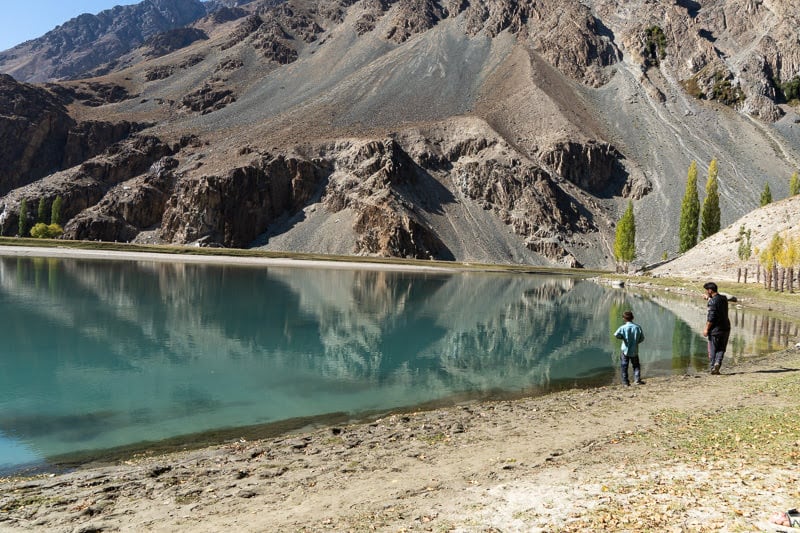
Adding Pakistan to the List
When my partner and I first heard about this massive change, we were determined to add Pakistan to South Asian backpacking adventure. And these days- so are many others! Though the country is still talked down by Western Media- what we saw for ourselves proved every word uttered by pundits unequivocally false. Is it a country full of terrorists? NO!
Try some of the most hospitable people in the world. A flat desert? How about some of the most mesmerizing landscapes and tallest mountain peaks on the planet!
Sunny solitude

Even though Pakistan is becoming more and more popular with foreign tourists, few venture off its already beaten path. Pakistan’s tourist track usually consists of central Hunza, which is a district in Gilgit-Baltistan admittedly filled with wonders. Beautiful as they may be- we sought out a different side of Pakistan. The authentic side —sans Western-style restaurants, tourist shops, and inflated prices.
It took all of 5 minutes to realize that Phander would certainly meet those expectations. Our guesthouse, Lake Inn, stood mere steps from the most famous attraction in town: Phander Lake, which is really multiple lakes in one. After settling into our 1000 rupee a night room ($6.45), and munching on some walnuts and pound cake, we made our way down to the lake.
Though I had seen pictures of it before, nothing really prepares you for how something will look and feel when you’re standing right in front of it. The first “lake”- dark blue and surrounded by towering cliffs would have been enough. I giddily snapped photos from the dirt walking path and climbed up onto one of the many boulders that surrounded the immaculate body of water.
A Massive Green Field
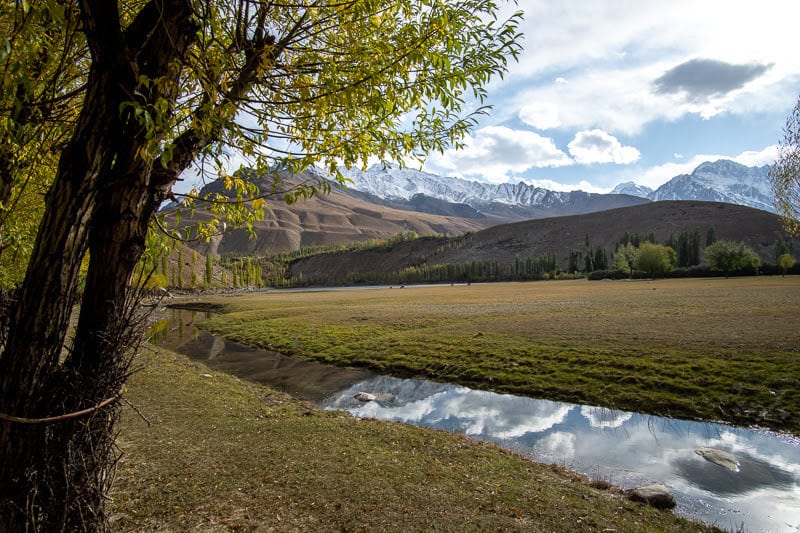
As we moved further along, a massive green field dotted with cows greeted us. The field seemed to break the lake in two- beyond it was yet another body of water. One I could even tell from far away was anything but “dark” blue.
I meandered along the side of the pasture until a small inlet of water awaited my jump across. A quick hop and some steps later, we finally emerged out from under the lime-green shade of the trees.
Boy, were we in for a treat.
A massive, crystal clear, aqua blue pool of water mulled out before me, flanked behind by massive mountain peaks dripping in snow. A villager traipsed past with his herd of fluffy cows- but aside from him: not a soul. Just us, the cows across the way, and the lake that seemed too still and too reflective to be real. But somehow, it was.
Pakistan’s Best Kept Secret
As we spent five days lazing by Phander Lake, chatting with our guesthouse owner, and wandering about the village I couldn’t help but be shocked that we had this place all to ourselves. Sure, it was near the end of the season- but the fall colors weren’t even here yet! Though nights kept a bit cool, days remained warm. 70s with a slight breeze— absolutely perfect for adventuring.

Phander is only 4-5 hours by road from Gilgit City- a major stopping point for those heading to Pakistan’s Northern Areas from below.
Nevertheless, many tourists don’t bother to take the deviation into Ghizer. Our guesthouse owner, Shahzad, told us that while July was the busiest month, tourism in the valley remained low-key.
Only three guesthouses exist near the lake: all comfortable, simple, warm, yet not luxurious.
And unlike other places throughout Gilgit-Baltistan, there’s not much to do in Phander, which is perhaps a turn-off for those in need of constant entertainment.
Phander is a place to simply enjoy the beauty of one’s surroundings, not somewhere you go to tick off items on a bucket list. It’s a place that only enjoys 2G cell phone reception- email, Facebook and Youtube certainly didn’t work there.
There are no buses, no restaurants, no noise: just peace. Something that both the villagers we met (and myself ) hope remains that way as Pakistan becomes more and more popular to the general public.
Hospitality Abound
Though it’s more than clear that Phander is a paradise- it’s more than just it’s lakes. The village is home to some hiking opportunities, some of Pakistan’s most delicious trout, and as with most villages in the country: incredibly hospitable locals.
We got our first taste of Phander’s hospitality from our guesthouse owner, Shahzad. Shahzad runs the Lake Inn, which is the best place to stay in the village if you ask me. He and his family are originally from Phander, though they live in a different part of the Ghizer district these days. During winters, he returns home, but from April-October, you’ll find him at his guesthouse- which happens to be one of the best value stays we encountered in all of Pakistan.
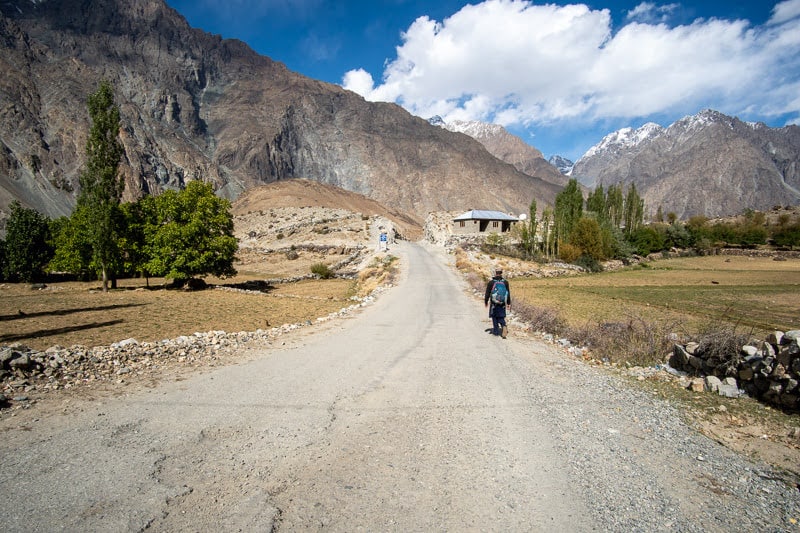
Every Room with Hot Water
As backpackers, hot water and cleanliness are usually luxuries. But not here. Shahzad not only managed to keep every room innervated with that delicious hot H20, but the rooms were immaculately kept.
From day one, he made it his mission to ensure we had the best time in Phander possible. When I needed a SIM card, he helped me get one within a few hours. When we really wanted to try the local delicacy that is trout fish, he made sure our final meal in Phander was full of it.
Shahzad directed us to a view-point hike, arranged for our transport to our next destination, and even showed us around said destination since he happened to come along with. What’s more, on our final day in Phander he gave us the gift of seeing part of a local wedding.
Wedding Festivities
On the eve of the wedding, Charles (my partner), Shahzad and I loaded up into his friend’s minivan and made our way to the home of the groom-to-be. It was one thing to casually chat with locals who lived by the lake- but being completely immersed into their homes is another thing entirely
We were greeted with some tasty eats that included a truly memorable dish: ox curry. Think a really juicy, tasty steak– but somehow even better.

We spent our last night in Phander meeting droves of Shahzad’s relatives and friends, where we had the pleasure of drinking salt tea (a local favorite) and eating farm-fresh goat cheese (another popular dish).
Though not every single person spoke English, communication happened nonetheless!
Don’t count out determined folks from making a way with words even without a shared language.
The True Highlight of Phander
Our evening with the wedding party echoed many of our meetings with locals in Pakistan- true hospitality and kindness coupled with genuine excitement to meet us. As much as I truly LOVED Phander Lake (and Pakistan in general)- there’s a lot of beautiful lakes and countries in this world.
I’ve been lucky enough to see many in my years of travel, but what made Pakistan stand out amongst the rest-especially in its mountain villages- is the people who live there.
It didn’t matter if a common language was missing or if commonalities seemed to be lacking. The people of Pakistan always, always found a way to make us feel comfortable, welcomed and appreciated.
So while the lakes may be spectacular and the mountains might be high, it’s the people of this country I met and the promise of more friendly connections to be made that have me planning a swift return.
Visit Phander Valley
Getting There
Phander Valley is only accessible by road, though you can fly to Gilgit City to cut down on the number of hours it takes to reach the valley. Flights from Islamabad to Gilgit cost around $100 and are canceled frequently due to weather concerns.
From Gilgit, a shared minibus will take about 4-5 hours to reach Phander. Mini Buses leave daily around 6:00 AM with costs being anywhere from 500-1000 rupees per person. It is also possible to hitchhike or rent a taxi, though the latter will be very expensive and not something I recommend.

Due to the flight being expensive and inconsistent, the best way to reach Gilgit is by bus. NATCO buses (2150 rupees) depart from Rawalpindi (Islamabad’s sister city) and take about 17 hours to reach Gilgit.
A better option is Faisal Movers, a private bus company that’s a bit more expensive (2650 rupees) but far cleaner and comfier.
It’s also possible to reach Phander from the opposite direction, through a route that goes over the beautiful Shandur Pass.
This is the route we took in October from the small town of Mastuj. NATCO mini-buses are supposed to run from Mastuj to Gilgit daily, but for some reason they had stopped running when we visited, leaving us to take a shared jeep to reach Phander. The shared jeep cost 600 rupees/ per person and left at a very painful 5:00 AM. The ride took about 5 hours.
Where to stay
As mentioned, I highly recommend staying at the Lake Inn which costs 1000 rupees a night for a double room. If for some reason the Lake Inn is full, you can also check out Lake View, another budget guesthouse. There is also a PTDC Hotel run by Pakistan’s department of tourism, but at 5000 rupees a night ($32) it’s pretty pricey.
When to visit
Phander gets very cold and frozen in winters, so the best time to visit to actually enjoy its beauty is April-October. Even though it’s still offbeat, keep in mind that May is the busiest month for tourism in Pakistan. If you’re keen to take a swim in the lake (which we were told was possible), the village’s highest temperatures are observed in July and August.
Notes about Traveling Through Rural Pakistan
What to wear- Pakistan is 97% of people are Muslims, and conservative. Shorts, tank, tops and short sleeve shirts are a no-go in most places, though you could get away with a T-shirt and jeans in liberal enclaves of cities or the uber-popular region of Hunza.
Your best bet (whether male or female) is to get yourself a shalwar khameez upon arrival. What’s a shalwar khameez? Only the most comfortable outfit to ever exist! The shalwar (loose pants) and
Ladies shalwar khameez’ also comes with a dupatta- a matching shawl. Though covering one’s head isn’t mandatory, it’s great to have if you do head to a more conservative area and want to blend in more, or if you visit a mosque where head covering is mandatory for women.
Customs to observe- Dressing appropriately is the most important custom to stay in tune with, but it’s also important to keep a few others in mind as well! If you’re a lady, don’t offer to shake a man’s hand unless he does so first. It’s customary to put your right hand over your heart instead.
It’s also important to note that Pakistan is officially a dry country, though expensive hotels are allowed to sell alcohol to tourists. (Bootleggers are exceedingly common in cities, too.)
On Fridays just after noon, many partake in the jummah prayer- a large, congregational, weekly event. As such, many people will only work half-days on Fridays to be able to attend.
If you happen to be traveling during Ramadan- a Muslim holiday where followers fast during the daytime hours for a month- keep in mind that many (if not all) restaurants and street stalls will be closed during the day. Travelers have reported that finding food was not difficult as even those fasting were eager to help them acquire it anyways.
Unique Traditions- Sufiism is what’s known as an “order” of Islam. It’s considered an inward dimension of the religion and is often related to mysticism. Sufi shrines are plentiful in Punjab and Sindh provinces, and many host a weekly event that you’d never expect to see in Pakistan.
Every Thursday night at shrines across the country, dhamal is held. Dhamal is a kind of trance-like dance, where performers whirl themselves into a daze accompanied by the beats of ankle bells and large, thumping drumbeats. This is truly a sight to behold- and is often accompanied by some of Pakistan’s hazier stuff, otherwise known as hashish. Though hashish (a form of the marijuana plant) is technically illegal, it’s widely used by men throughout the country and is particularly popular at dhamal and other Sufi events.

Samantha Shea is a self-proclaimed South Asia addict and hippopotamus lover who’s been on the road for seven months so far. She blogs about her indefinite budget-backpacking adventure at Intentionaldetours.com, where she shares guides and stories to help and inspire you to visit offbeat places, too.
- Saudi Arabia Might Be Your Next Getaway Spot - April 23, 2024
- Mongolia, the Land of Eternal Blue Sky - April 20, 2024
- These 9 U.S. National Parks Require Reservations in 2024 - April 17, 2024



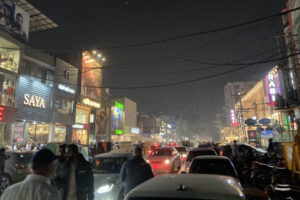
Pakistan is a country rich in culture
Pakistan is blessed with so many beautiful lakes and rivers
hill stations in pakistan are nature’s tranquil retreats, where lush greenery and cool mountain air embrace weary souls, offering solace and rejuvenation amidst breathtaking vistas.
These enchanting hill stations in Pakistan provide a blissful escape from the heat of the plains, inviting visitors to immerse themselves in serene surroundings and embrace the serenity of the mountains. Read to know more: https://blog.realtorspk.com/hill-stations-in-pakistan/
Pakistan is a country rich in culture, tradition, having beautiful deserts, majestic mountains, historical places, lush green plains, breath-taking archaic landscapes, fascinating hill stations, enormous glaciers, famous dams, and beautiful. All these explain the beauty of Pakistan.
It’s a nice post; thanks for sharing this very important information with us. In some cities in Pakistan, the traffic laws are extremely tight. Driving in Karachi, Lahore, and Islamabad is particularly dangerous, therefore please follow the traffic laws strictly at all times. This will help you avoid numerous certain and unpredictable risks. For more details visit https://www.tabanirealestate.com/
Thanks for sharing very useful information with us it’s a great post. In Pakistan, driving rules are so strict in some cities. Safety is so important specifically when you are driving in Karachi, Lahore and Islamabad for this purpose kindly follow driving rules properly always beneficial for avoiding so many certain or uncertain risks.
Its sooo amazing!!! Pakistan is blessed with so many beautiful lakes and rivers: Some of famous lakes in Pakistan are: https://blog.graana.com/lakes-in-pakistan/